A particle of mass is moving with a velocity of 200 m/s. An impulsive force of 4 s duration acts on the particle in a direction opposite to its motion. The force fluctuates a little bit around 40 N magnitude and then it dies out in next 4s showing small fluctuations. An oscilloscope records the force as shown. The two oscillating components in the graph are identical except that one is mirror image of the other. Find the magnitude of velocity of particle after the force stops acting.
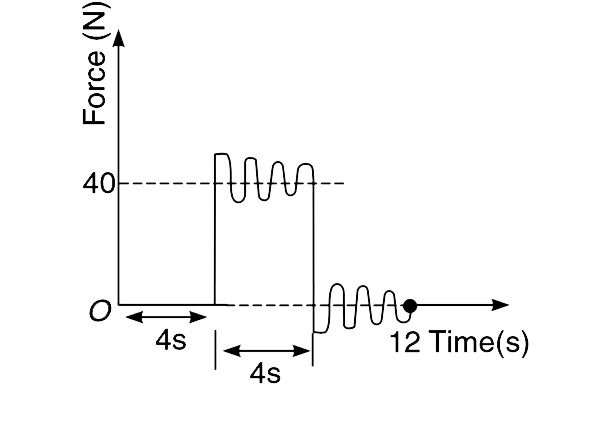
The correct Answer is:40 m/s
Step by step video, text & image solution for A particle of mass 1 kg is moving with a velocity of 200 m/s. An impulsive force of 4 s duration acts on the particle in a direction opposite to its motion. The force fluctuates a little bit around 40 N magnitude and then it dies out in next 4s showing small fluctuations. An oscilloscope records the force as shown. The two oscillating components in the graph are identical except that one is mirror image of the other. Find the magnitude of velocity of particle after the force stops acting. by Physics experts to help you in doubts & scoring excellent marks in Class 11 exams.
Topper's Solved these Questions
Similar Questions
An ideal gas is inside a cylinder with a piston that can move freely. The walls of the cylinder and piston are non- conducting. The piston is being moved out of the cyl- inder at a constant speed u.
(a) Consider a gas molecule of mass m moving with speed v(>>u). It hits the piston elastically at an angle of incidence q. Calculate the loss in kinetic energy of the molecule.
(b) If the area of piston is A and pressure of the gas is P, calculate the rate of decreases of molecular kinetic energy of the gas sample.
(c) Ifu>> molecular velocities, at what rate will the gas lose its molecular kinetic energy
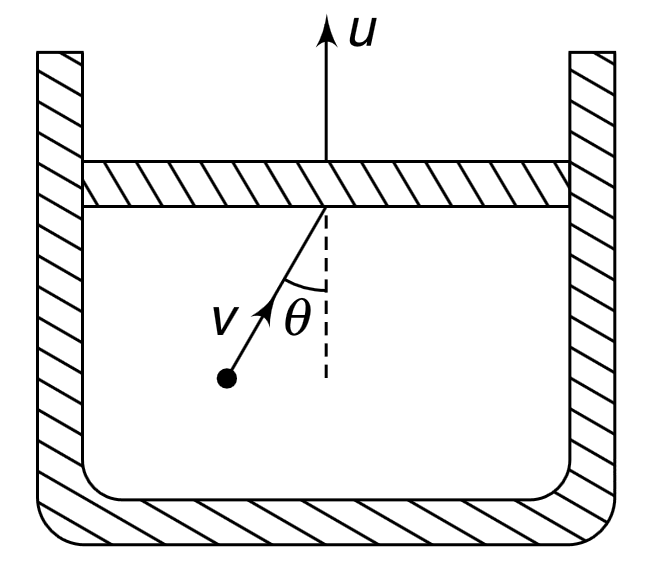 00:45View Solution
00:45View SolutionLet →u be the initial velocity of a particle and →F be the resultant force acting on it . Describe the path that the particle can take if
(a) →u×→F=0and→F=constant
(b) →u.→F=0and→F=constant
In which case can the particle retrace its path .View SolutionA particle of mass 2 kg moving with a velocity of 3 m//s is acted upon by a force which changes its direction of motion by an angle of 90^(@) without changing its speed. What is the magnitude of impulse experienced by the particle?
04:06View SolutionA particle of mas 70g, moving at 50cm/sis acted upon by a variable force opposite to its direction of motion. The force F is shown as a function of time t.
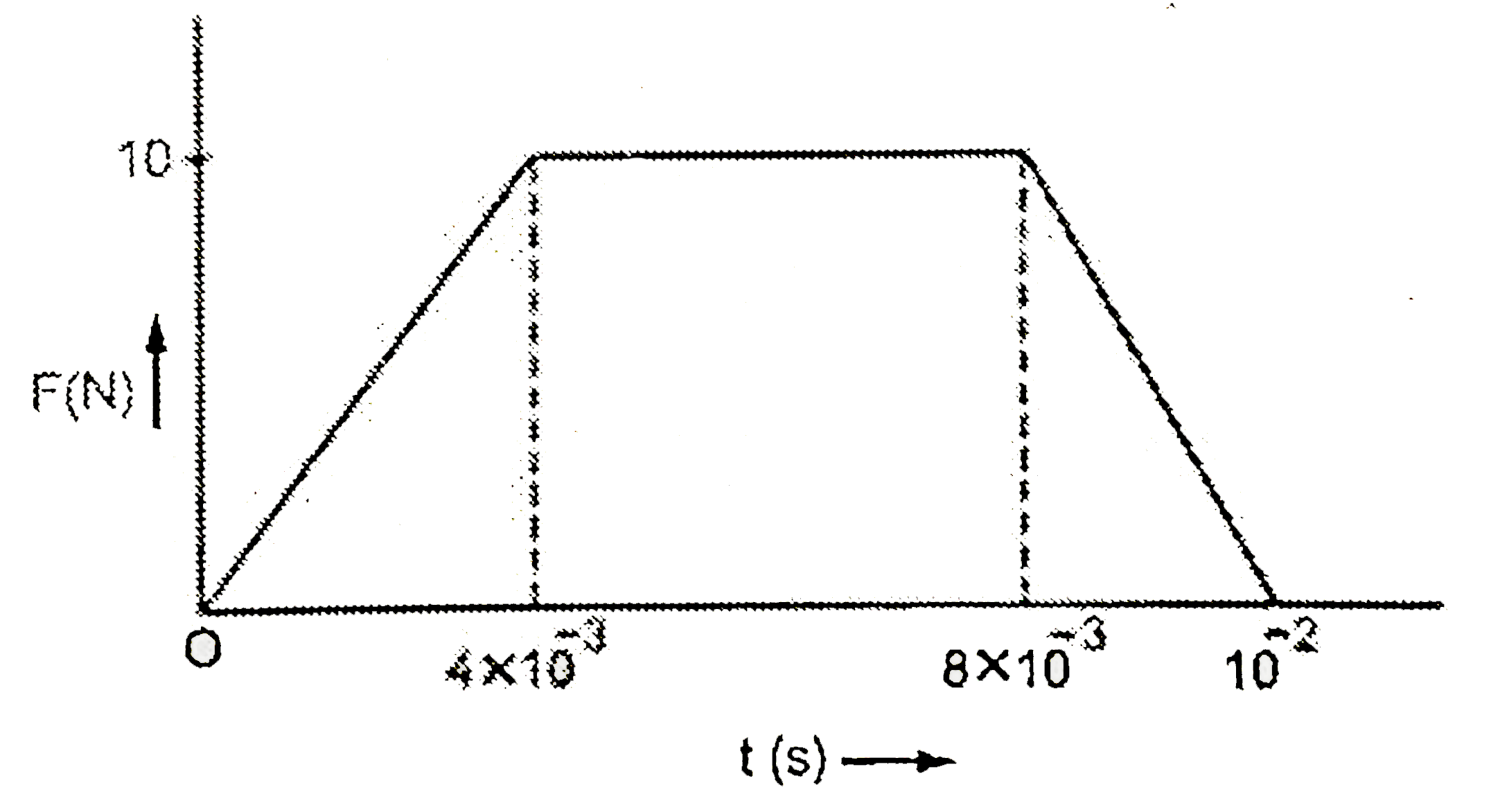 02:33View Solution
02:33View SolutionAn object of mass 10 kg is moving with an initial velocity of 10 m s^(-1) . A constant force acts for 4 s on the object giving it a speed of 2 m s^(-1) in the opposite direction. Find the acceleration and force.
01:49View SolutionA body of mass (1)/(4) kg moving with velocity 12 m//s is stopped by applying a force of 0.6 N. Then impulse is :-
03:23View Solution3 किग्रा द्रव्यमान के पिंड पर क्रियाशील स्थिर बल 25 सेकंड में उसके वेग को 2 मीटर/सेकंड से 3.5 मीटर/सेकंड कर देता है । यदि पिंड की गति की दिशा अपरिवर्तित रहे तो बल का परिमाण ज्ञात कीजिए ।
05:17View SolutionA particle of mass 2kg is initially at rest. A force starts acting on it in one direction whose magnitude changes with time. The force time graph is shown in figure. Find the velocity of the particle at the end of 10s.
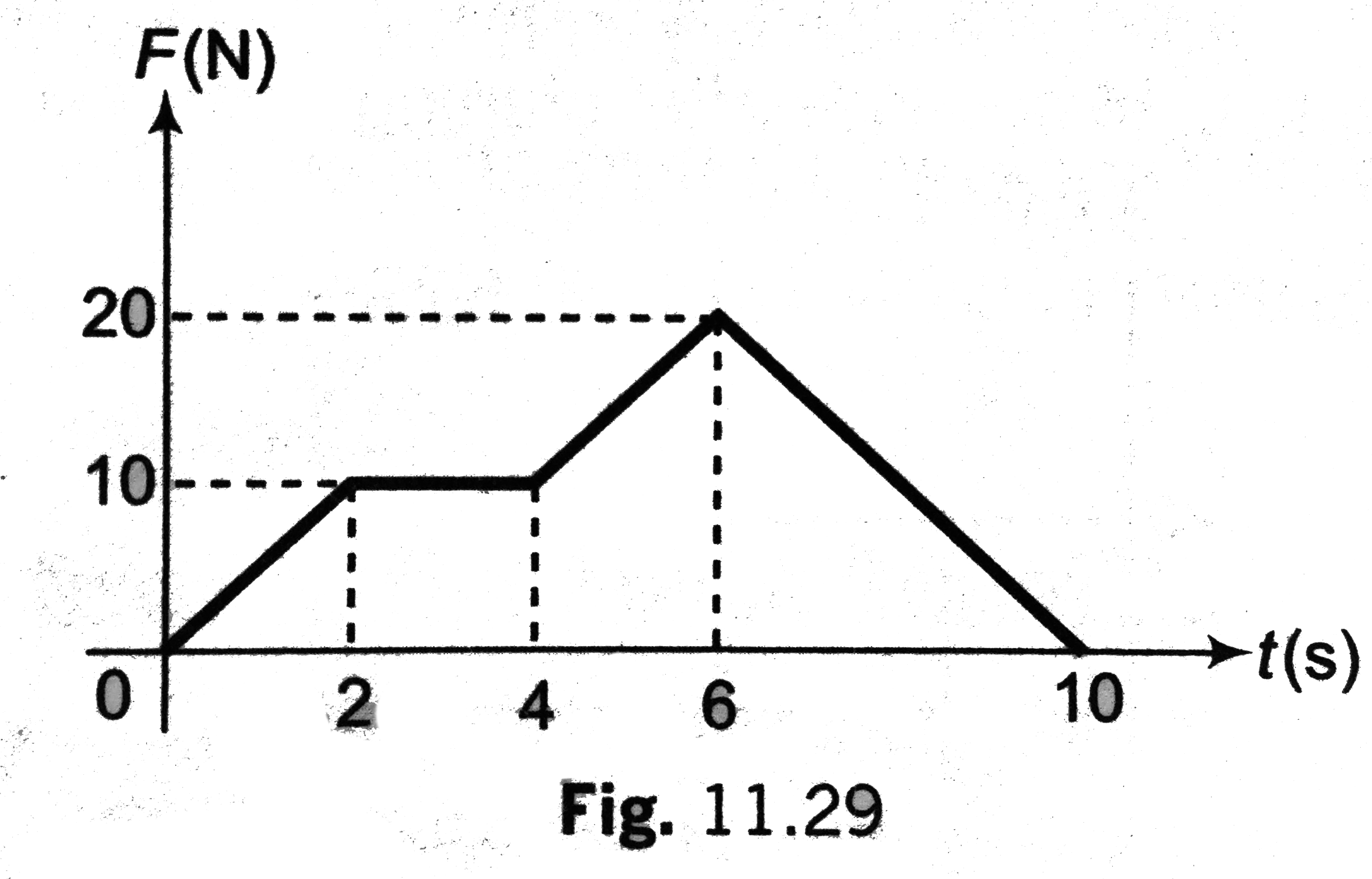 View Solution
View SolutionA particle of mass 1 g moves on a straight line. The variation of its velocity with time is shown in fig. Find the force acting on the particle att = 1 s,4s and 7 s.
02:19View SolutionA particle of mass 120 g moving at speed of 750 cm/s is acted upon by a variable force opposite to its direction of motion. If the velocity of the particle becomes 250 cm/s along the direction of force, find the value of time 't' for which force acted.
02:14View SolutionA particle of mass 2kg moving with a velocity of 3m/s is acted upon by a force which changes its direction of motion by an angle of 90∘ without changing its speed. What is the magnitude of impulse experienced by the particle?
03:22View SolutionThe figure shows the position time graph of a particle of mass 40 kg. What is the force acting on the particle of 0<t<4 s
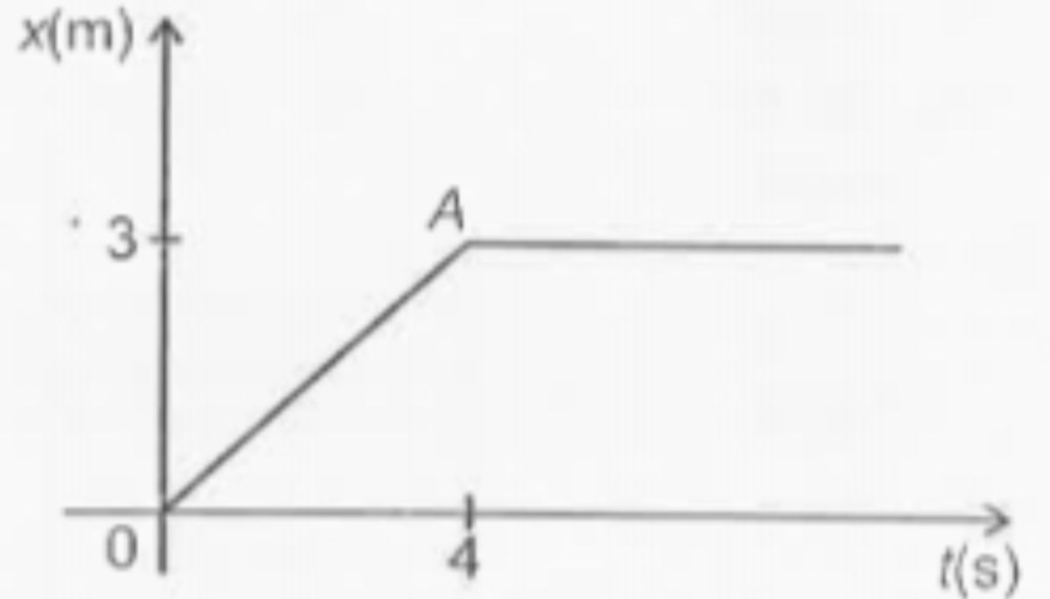 03:47View Solution
03:47View SolutionA particle of mass 2 kg is initially at rest .A force acts on it whose magnitude change with time The force time graph is shown below .

The velocity of the particle after 10 s is04:06View SolutionThe fig shows the position the position- time graph of a particle of mass 4 kg. What is the
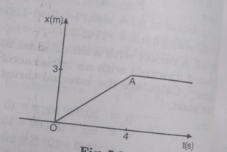
Force on the particle for t < 0, t > 4s, impulse 0 < t < 4 s ?02:26View SolutionAn object of mass 10 kg is moving with an initial velocity of 10 m s^(-1) . Aconstant force acts for 4 s on the object giving it a speed of 2 m s^(-1) in the opposite direction. Find the acceleration and force.
View Solution

